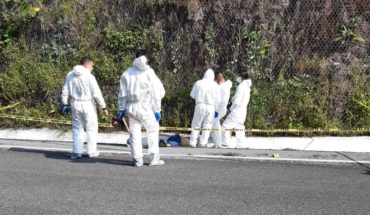Due to the intense tectonic activity of the area where our country is located, Chile has been exposed throughout its history to large and destructive tsunamis; as an example, on May 22, 1960 or February 27, 2010 where after a devastating earthquake of magnitude 8.8 on the Richter scale, the arrival of the waves caused the death of 117 people on the coastal edge according to ONEMI reports.
The research funded by ANID FONDEF, is led by Professor Néstor Becerra Yoma of the Department of Electrical Engineering (DIE) of the University of Chile, in collaboration with the Universities of La Frontera and Austral-.
The researcher is developing a technology with machine learning methods (artificial intelligence -AI-) and signal processing for the detection and rapid evaluation of waves produced by potentially tsunamigenic earthquakes or that can cause tsunamis.
Professor Néstor Becerra Yoma.
The knowledge could be very useful to strengthen and streamline the processes of technical bodies, both in monitoring actions and in decision-making in the face of this threat. In addition to reducing the time of uncertainty in the population.
Professor Becerra’s contribution uses deep learning (a branch of AI) to be able to make a first estimate of the magnitude of an earthquake, which -if it is large enough- could cause a tsunami on the coasts of Chile, using only the data of the first monitoring station, where the wave is detected before the signals reach the rest of the stations that make the estimation of the hypocentral parameters of the earthquakes that generate them.
The accuracy achieved with respect to the final estimate is similar, but it is done in much less time saving several minutes, an important period for the evaluation actions of the event by the agencies that make up the National Tsunami Alarm System (SNAM).
“The next step of the research is to train the system with more events to observe its accuracy and robustness. Once this test has passed, it could be implemented in the daily operation of the National Seismological Center,” explains Becerra.
Currently, once an earthquake has occurred, the National Seismological Center (CSN) has five minutes to issue an estimate of its epicenter and magnitude. This is because the seismic wave must be observed in a certain number of stations (at least four) before making a preliminary estimate that is sent to the SHOA (Hydrographic and Oceanographic Service of the Chilean Navy) for the evaluation of the tsunamigenic potential.
Once this assessment has been made, ONEMI (National Emergency Office of the Ministry of the Interior) determines whether the coastal population should be evacuated. Minutes later, the CSN makes the final magnitude estimate using complementary methods, after the seismic waves have been observed at other stations.
The article describing the research, entitled “End- to-End LSTM Based Earthquake Magnitude Estimation with a single Station” and sponsored by ONEMI and the National Service of Geology and Mining of Chile (Sernagoemin), was accepted for publication in the journal “IEEE Geoscience and Remote Sesing Letters” so it should be published in the coming weeks as scientific research. Becerra’s team also included Aarón Cofré, Marcelo Marín, Oscar Vásquez Pino and Nicolás Galleguillos.
“This would not be possible without the advice and inspiration of my uncle Fortunato Yoma, who was one of the precursors of anti-seismic engineering in Chile in the 60s and one of the founders of the Structures Laboratory of the University of Chile. To him I owe my curiosity about seismology and the basic concepts that I learned from his hand,” said Professor Néstor Becerra.
Follow us on





